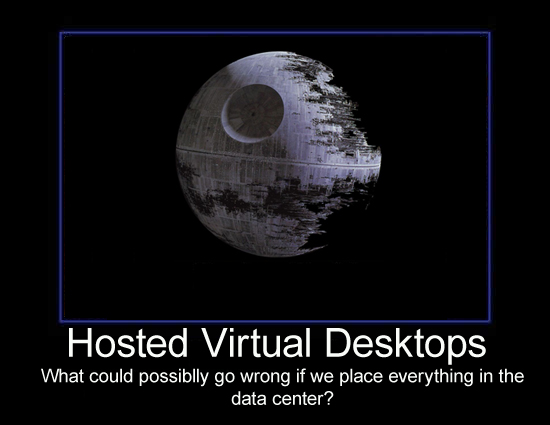
Well friends we are nearing the end of another year and closing in on the first decade of the century. As we prepare for the onslaught of 2009 predictions I thought it would be appropriate to look back on all that is FAIL in the world of technology over the past decade so we can learn, grow and laugh at someone else’s expense. So I give you the top 10 worst technology failures of the last decade…
10. Oakley MP3 sunglasses (The Death of Cool)
MID MORNING
A WAGNERIAN ARIA plays, a crystalline TENOR SOLO haunting in its beauty consumes an executive board room
FADE IN:
Oakley Executive #1
“Let’s take one of the hottest sunglass brands and combine them with one
of the hottest consumer gadgets and make millions”
All
“Yeah, we will make millions, let’s do it”
This is definitely a case of two things that do not go well together, sort of like Mento’s and Soda, or Symantec and Innovation, aside from the logistical issues of having to wear sunglasses to listen to music, there is simply no way to look cool wearing a pair of dork specs, and honestly who buys a pair of Oakleys if they didn’t want to look cool.
Full Disclosure: I owned stock in Oakley, was actually quite happy that they signed a contract with the Army and when they released the oil drum model I was sure the stock would sky rocket, oh well.
9. The Original DIVX (Making Betamax look genius)
In an awe inspiring moment of fail Circuit City (here), the now gasping for air consumer electronics chain, made an attempt to corner the movie rental industry with the introduction of the Digital Video Express (DIVX) format. The concept was simple, you – the consumer – pay them $4 for a disc that is only viewable for 48 hours and only on a DIVX player – after 48 hours it became as useless as silicone thigh implants, unless you coughed up an additional $3-4 for another 48 hours.
8. HD DVD (The FAIL of a new generation)
The now obsolete high-definition digital video format introduced by Toshiba lost the HD format wars to Blu-Ray, I wold love to weave a David and Goliath story that touched the four corners of the entertainment industry, spin a tale of how the XBox and PS3 were instrumental in the success of one and demise of the other, or how tech savvy consumers, battle hardened from decades of format evolution, were able to understand the nuances of quality, cost, storage capacity and available content. I would have loved to post that the porn industry won the battle, but in the US they actually standardized on HD DVD. So how did HD DVD lose? purely conjecture on my part, but it would appear that Sony simply out biz dev’d Toshiba, scoring retailer and major studio support and amassing a larger collection of movie titles.
7. The Millennium Bug (Y2Fail)
Billed as the technology equivalent of the “Day After” (here), a movie depicting the devastating effects of a nuclear holocaust, the Y2K, or Millennium bug, was supposed to result in a total technology breakdown. It was feared that planes would fall from the sky, critical services would cease to function and the world’s power grids would go dark. I remember at the time I was working at McAfee (here) and as the clock moved closer to New Years the office was crawling with reporters hungry for a front row seat to digital Armageddon. Of course, nothing happened and all the doomsayers were forced to take down their sandbags and unload their automatic rifles – to some this was a really disappointing turn of events, for others it marked the most visible technology FUD fail of all time.
6. Windows ME (Mistake Edition)
I would have said Bob, but that fail was so 1995. Windows ME (here), dubbed the slowest, buggiest, and most unstable operating system ever released, has won top honors as the worst Microsoft OS to date. The biggest flaw in Windows ME, and earlier versions of the Windows OS, is a lack of memory protection. This problem was exasperated in Windows ME as they attempted to introduce a broad set of new capabilities, such as new system utilities like system/virus restore, media support, automatic updates and the new TCP/IP stack all of which allowed Micrsoft to achieve a whole new level of stabiilty fail.
5. The Sony BMG Rootkit (Meine kleine digitale Parasiten)
In what has probably become the epic DRM (digital rights management) fail of all time (here), Sony BMG implemented a copy protection scheme that was distributed through music CD’s to consumer desktops, essentially installing a nearly undetectable rootkit that collected user information and sent it to the Borg collective. It was eventually detected and there was a major backlash from the security industry. Sony is still in the middle of fending off class-action lawsuits as a result.
4. Second Life (Give us your marginal, your dispossessed, your virtually lost)
Second life (here), the internet based virtual world created by Linden labs, in which virtual “residents” roam a 3D virtual world, virtually interacting with each other and virtually trading virtual money, called Linden dollars. No mythical creatures, no battle axes, or quests, or zombies, or explosions, or really any point to it at all. What kind of folks spend their time in a virtual world? Well according to Linden Labs Chairman of the board, Mitch Kapor…
the earliest wave of pioneers in any new disruptive platform, the marginal and the dispossessed are over represented, not the sole constituents by any means but people who feel they don’t fit, who have nothing left to lose or who were impelled by some kind of dream, who may be outsiders to whatever mainstream they are coming from, all come and arrive early in disproportionate numbers.
Just massive amounts of time doing nothing “virtually” with a group of marginal and dispossessed individuals, really? seriously? is this for real? perhaps they should change the name to secondlife.com.
3. Windows Vista (Windows ME Take 2)
Windows Vista (here), the successor to Windows XP was supposed to herald in a new era of Windows security, stability, and functionality, unfortuantely it failed on at least 2 of those fronts as there was widespread incompatibility and performance issues. In one of the oddest enterprise software ad campaigns to date, Microsoft unveiled “Mojave” the “Ha! I tricked you it really is just Vista” experiment (here) – call it what you will, fail is as fail does. Windows is now looking to fast track the release of Windows 7, which is the final nail in the Vista coffin. The folks over at ZDNet have a nice writeup on the top 5 reasons Vista failed (here)
2. The Internet bubble and dot com bomb of the early decade (E Pluribus, deficio)
I loved the 90’s back then you could get your money for nothing and your chicks for free, but like every wild party someone has to deal with the massive hangover the next day (here), and that hangover was the sudden reality that more than half of the .com companies were not only poorly managed and had ridiculous valuations, but were based on business models that seemed to be developed by third graders. Seriously not just one company that sells pet food over the internet but 5? Remember when the market cap for Amazon was greater than the entire addressable market they served, not only the digital market place but brick and mortar included. I know, I know, greed trumps common sense as we are experiencing with the sudden, although not unexpected, mortgage collapse and financial crisis, but didn’t someone think to ask “Seriously, you are willing to invest $20m in my company if I add a .com after the name – that’s just stupid”
1. The paperless office
No greater fail in our lifetime has had the impact that the myth of the paperless office has had. It has driven an entire industry in the PC and shaped a new generation of technical gadgetry and digital fail, from ebooks to digital document management systems, the paperless office has been a myth of epic proportions. Now I wasn’t around in the 40’s, which is when I believe the term was coined, but I imagine that there was far less paper floating around then there is now and there seems to be no let up in the tsunami of felled trees and charred Brazilian rain forest that fuel our appetite to print everything even if a new ink jet print cartridge costs more than a weeks worth of groceries.
Of course this is just one analysts opinion (and an entire market of data) so let me know – what did I get wrong and what did I miss?













